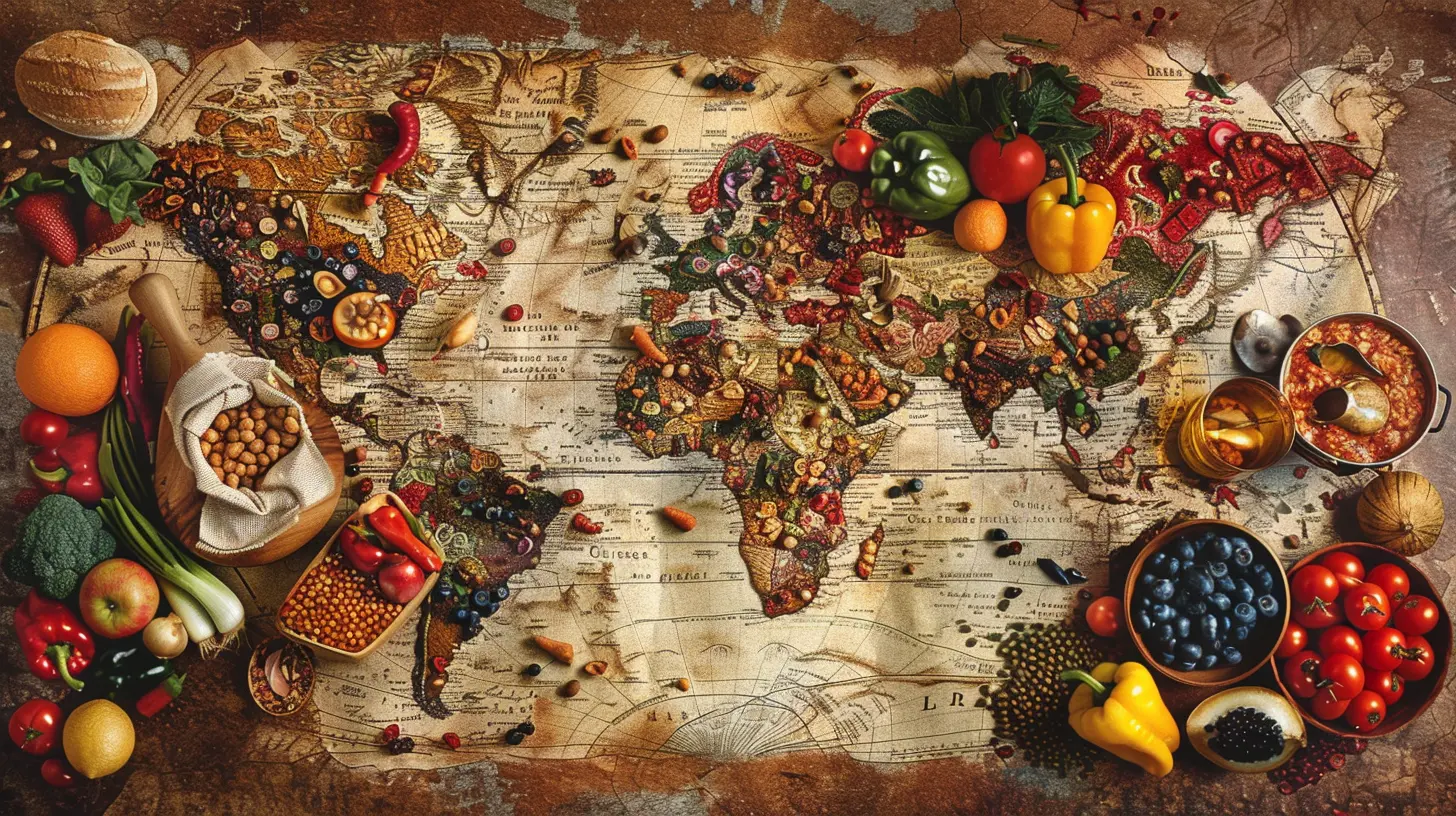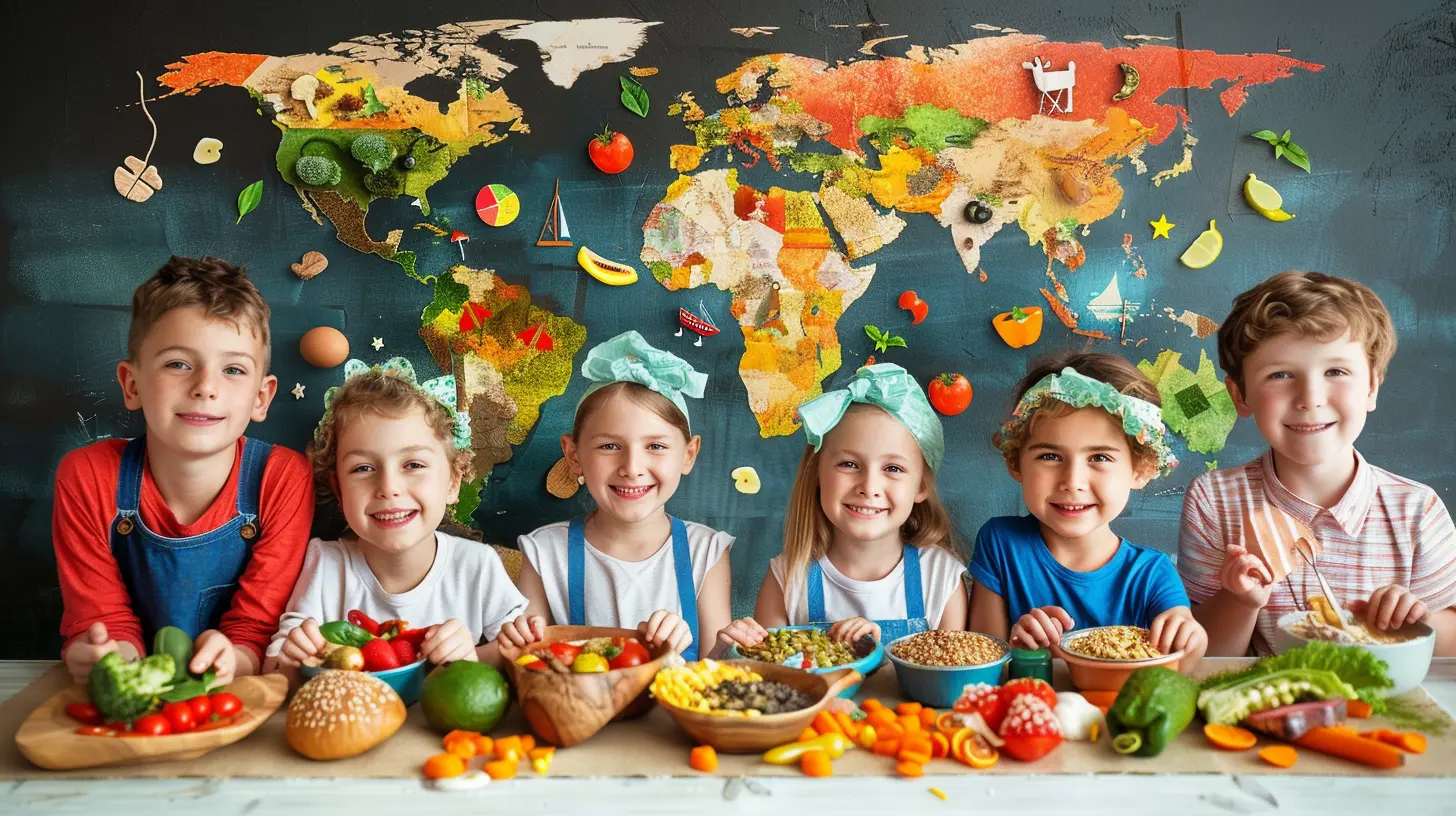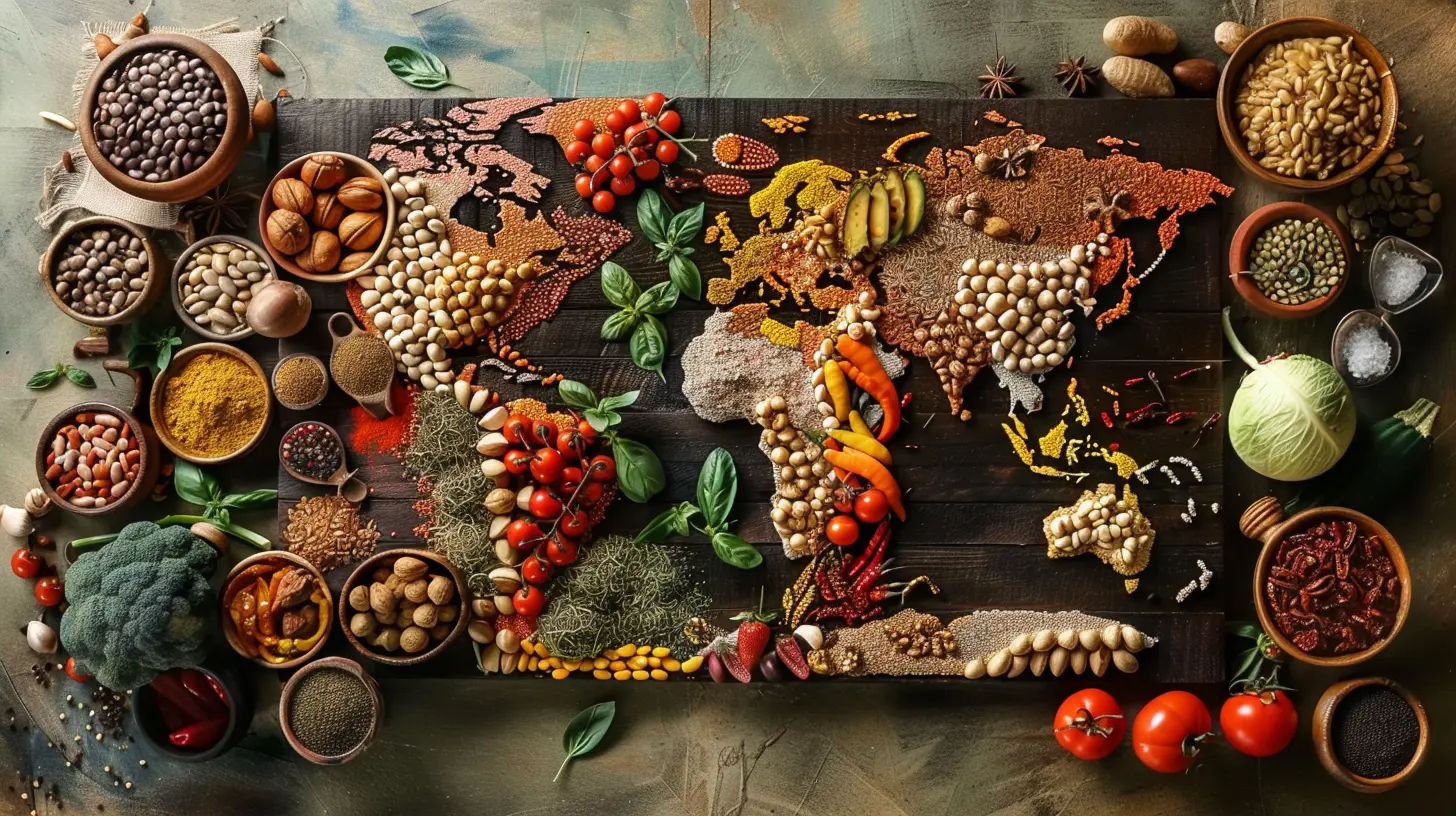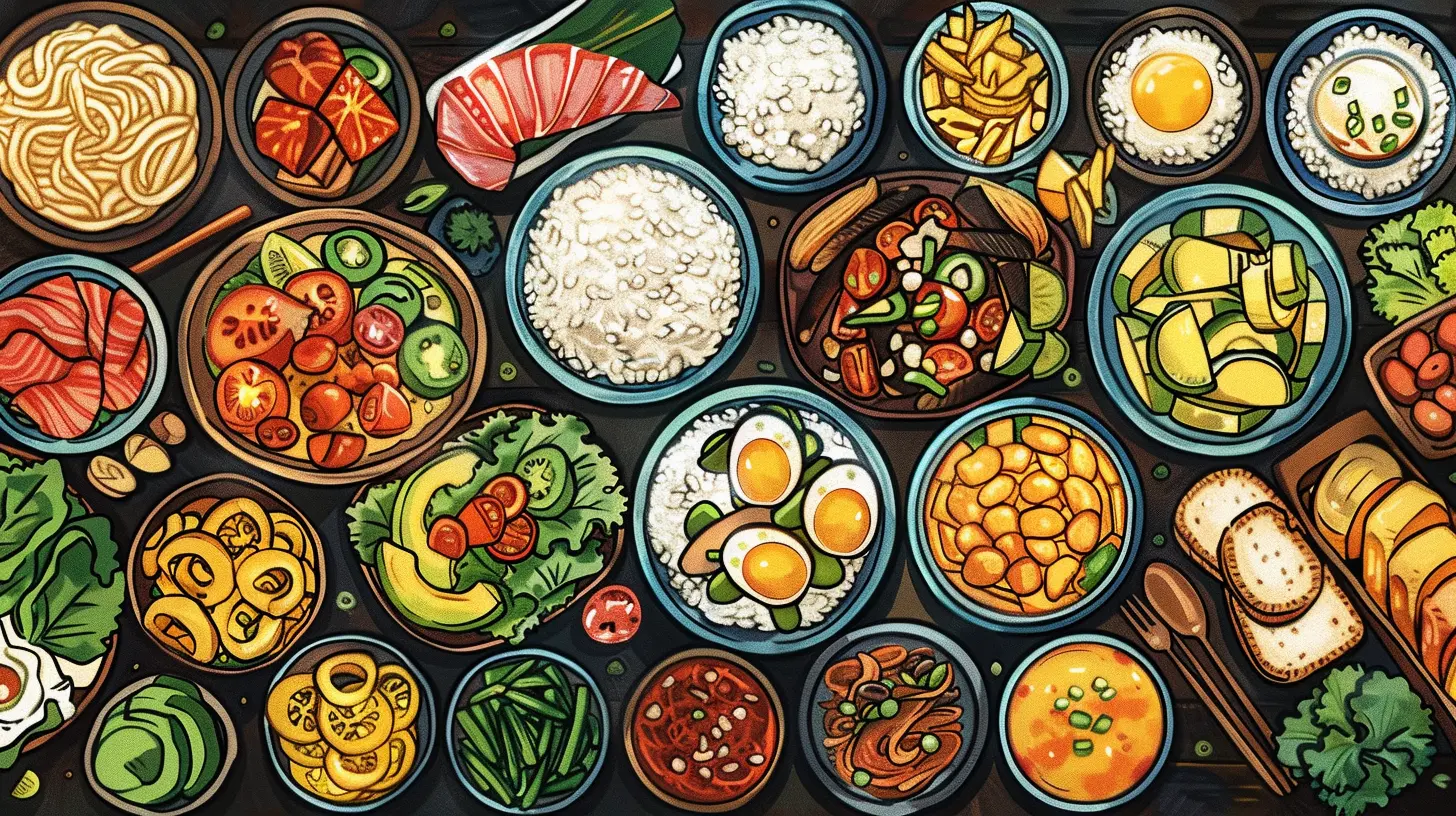The Role of Food in Teaching Cultural Awareness
6 October 2025
Let’s be honest—who doesn’t love food? It brings people together in the most magical way, whether it's a spicy street taco, a hearty bowl of ramen, or your grandma’s secret-recipe lasagna. But what if I told you food isn’t just about delicious flavors and full stomachs? What if it was also a doorway to understanding other cultures, a passport to empathy, and a secret ingredient to global education?
In this light-hearted yet meaty (pun totally intended) article, we’re diving fork-first into how food can be used as a powerful, tasty tool to teach cultural awareness. So, roll up your sleeves, grab a snack, and let’s dig in.

What's Cooking in the Classroom?
Before you raise an eyebrow—let's clarify. No, we’re not suggesting that every classroom become a full-on kitchen (though wouldn't that be amazing?). What we’re talking about is using food as a learning tool, a conversation starter, and a cultural ambassador that goes way beyond the plate.Food has a unique way of making abstract concepts tangible. Want to teach students about geography? Serve up some international cuisine. Need to tackle global traditions or holidays? Host a cultural food fair. Want to spark a discussion about identity, migration, or even climate change? Yup, food can do that too.

Food Is the Ultimate Icebreaker (Literally and Figuratively)
Ever notice how much easier it is to talk to someone over a meal? There's something comforting about sharing food that encourages openness. When people try another culture's cuisine, they’re not just tasting the flavors—they’re also getting a bite of that culture's story, values, and traditions.For example, serving dumplings in class can open up a discussion about Chinese New Year, migration patterns, family traditions, and the symbolic meanings behind food. It’s not just dumplings anymore—it’s a lesson wrapped in dough.

A Feast for the Senses—and the Mind
Food is more than fuel; it’s sensory storytelling. Each dish has something to say about where it comes from, who made it, and why. Think about it:- Spice levels? That might speak to a region's climate or the origins of its trade routes.
- Ingredients? These could tell you what’s locally available and how people adapted to their environment.
- Eating customs? These reflect societal norms, values, and taboos.
By encouraging students to ask questions like "Why do Ethiopians eat with injera?" or "Why is rice a staple in so many cultures?", we’re expanding their understanding of the world—no passport needed.

Food Bridges the Generational Gap
Grandparents love to cook. Kids love to eat. It’s a win-win. Inviting family members to share their cultural dishes and stories can make lessons deeply personal and memorable.Imagine students interviewing their grandparents about a traditional dish, writing a short reflection, and then presenting the dish in a class “taste and tell” session. Suddenly, everyone’s participating in a multi-generational, multicultural, multi-sensory learning experience. That’s education at its finest.
Tastier Than a Textbook
Let’s be real—textbooks can be dry. But teaching culture through food? That’s the juicy stuff. It makes learning personal, relevant, and downright fun.You’ve got students who might not care about the Cold War, but they’ll perk up when you talk about how certain cuisines evolved due to political conflict, colonization, or trade. You're not just feeding their tummies—you’re feeding curiosity.
Ideas to Bring Food into Education Without Needing a Kitchen
No kitchen access? No problem. Here are a few no-cook, all-awesome ideas:- International snack exchange: Students bring in snacks from their family’s culture and give a mini-presentation.
- Virtual food tours: Use videos and documentaries to explore how food is prepared and enjoyed around the world.
- Recipe analysis: Compare recipes from different countries—What ingredients do they use? What does this say about the culture?
- Menu design: Let students create a menu for a fictional restaurant representing a culture they want to highlight.
How Food Challenges Stereotypes
Let’s talk about that one restaurant in your town that claims to serve “authentic” Italian food but puts pineapple on their carbonara (gasp!). Food, when used thoughtfully, can dispel stereotypes and open up nuanced conversations about authenticity and cultural appreciation vs. appropriation.For example, teaching kids why sushi is more than just raw fish or why curry isn’t a one-size-fits-all term helps dismantle oversimplified views. It teaches respect, curiosity, and critical thinking. And trust me, that’s way more important than memorizing the capital of Luxembourg (no offense, Luxembourg).
Food as a Form of Cultural Identity
For many, food is at the heart of who they are. The smells, the tastes, the textures—all of it is tied to memory and identity. When students are invited to bring in or talk about a dish from their background, they’re not just presenting a recipe—they’re offering a piece of themselves.This builds empathy. It helps classmates see behind the accents, the clothes, or the customs. Suddenly, the world feels a little smaller, and our hearts a little bigger.
Global Table, Local Classroom
You don’t need a plane ticket to travel the world—you just need a plate. Food offers a practical way to experience “otherness” in a way that feels familiar. It also encourages students to become global citizens who not only tolerate but actively celebrate diversity.Teachers can tie food into lessons on:
- History: How did colonization shape modern cuisines?
- Science: What role does fermentation play in different cultures?
- Economics: How does globalization affect traditional food practices?
- Art: What do food presentations say about a culture’s aesthetic values?
See? Food really is the ultimate cross-curricular superstar.
Cooking Up Cultural Competence in the Real World
Cultural awareness isn’t just a classroom buzzword—it’s a real-world skill. In work, travel, and relationships, being culturally aware helps you avoid awkward faux pas, show respect, and build genuine connections.When students learn about culture through food, they’re not just getting a taste of another country—they’re learning how to sit at someone else’s table, literally and metaphorically. That’s lifelong learning at its finest.
But Isn’t This Just...Fun?
Yes—and that’s the point! Learning doesn’t have to be rigid or boring. In fact, when students associate positive emotions with learning—like the joy of discovering a new snack or hearing a friend’s food story—they retain that knowledge longer.Plus, food-based learning is inclusive. Language barriers? No problem—a plate of samosas needs no translation. Different learning styles? Taste, smell, touch, and sight have got you covered. Food invites everyone to the table, regardless of background or ability.
Bite-Sized Tips for Teachers and Parents
Looking to bring food into your teaching or home-learning activities? Here are a few quick tips:1. Be sensitive: Not all students can eat everything due to allergies, religion, or personal choices. Always ask first!
2. Encourage storytelling: Food and stories go hand in hand. Prompt students to share the “why” behind the dish.
3. Mix it up: Don’t just highlight the mainstream dishes. Dig into lesser-known traditions for a fuller picture.
4. Keep it interactive: Quizzes, food trivia, map activities—make it fun and engaging.
5. Celebrate the process: Whether it’s learning how to pronounce ‘pho’ correctly or making your own sushi roll, it’s all part of the journey.
Wrapping It All Up (Like a Burrito)
So, what's the final takeaway? Food isn't just about eating—it's about understanding. It's a delicious, hands-on, heartwarming way to teach students that the world is big, beautiful, and wildly diverse.By bringing food into educational settings, we’re not just feeding minds—we’re nourishing souls. We’re preparing students to approach the world with curiosity, respect, and maybe a healthy dose of hot sauce.
And hey, the next time you bite into something new, remember: you’re not just chewing—you’re learning.
Bon appétit, class!
all images in this post were generated using AI tools
Category:
Cultural AwarenessAuthor:

Olivia Chapman
Discussion
rate this article
1 comments
Jace Kirkland
This article insightfully highlights how food serves as a gateway to understanding diverse cultures. By engaging with culinary traditions, educators can foster empathy and appreciation, bridging gaps and enriching students' global perspectives in a tangible way.
October 12, 2025 at 11:47 AM

Olivia Chapman
Thank you for your thoughtful comment! I'm glad you found the article resonant in emphasizing food's vital role in fostering cultural understanding and empathy.


